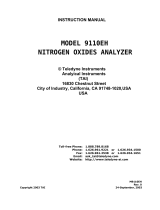
Version 2.0 13th May, 1993
The SinarTM AP Moisture Analyzer houses the latest
moisture measuring technology in a compact,
portable package. it has been designed to provide
fast moisture results using whole grain samples. In
addition to % moisture content, the AP measures
sample temperature and has facilities for
hectolitre (bushel) weight tests.
Each instrument is pre—calibrated for up to seven
commodities either chosen from a standard package
of programmes or selected from Sinar’s calibration
library. The calibration of any product can be
optimised using a bias facility (moisture and
hectolitre (bushel) weight).
The SinarTM TM AP Moisture Analyzer is one of a
family of 4 Moisture Analyzers. All 4 models have a
facility to transfer and receive calibrations from
each other. Either new commodities can be
transferred or existing calibrations can be updated
with new information.
II BASIC PRINCIPLE OF OPERATION
The design concept of the SinarTM AP Moisture
Analyzer is based on the simultaneous sensing of
capacitance, weight and temperature of the sample
being tested, providing a corrected moisture (%)
reading in a few seconds. It works accurately on
products with moisture content ranging from
approximately 1% to 35% depending on the
application.
The instrument incorporates 3 sensors:
1. Capacitance
The moisture in a sample absorbs the electrical
energy between the walls of the sample cell. The
electrical signal known as “Capacitance”
increases with the moisture content of the
sample and the size of the sample.




























